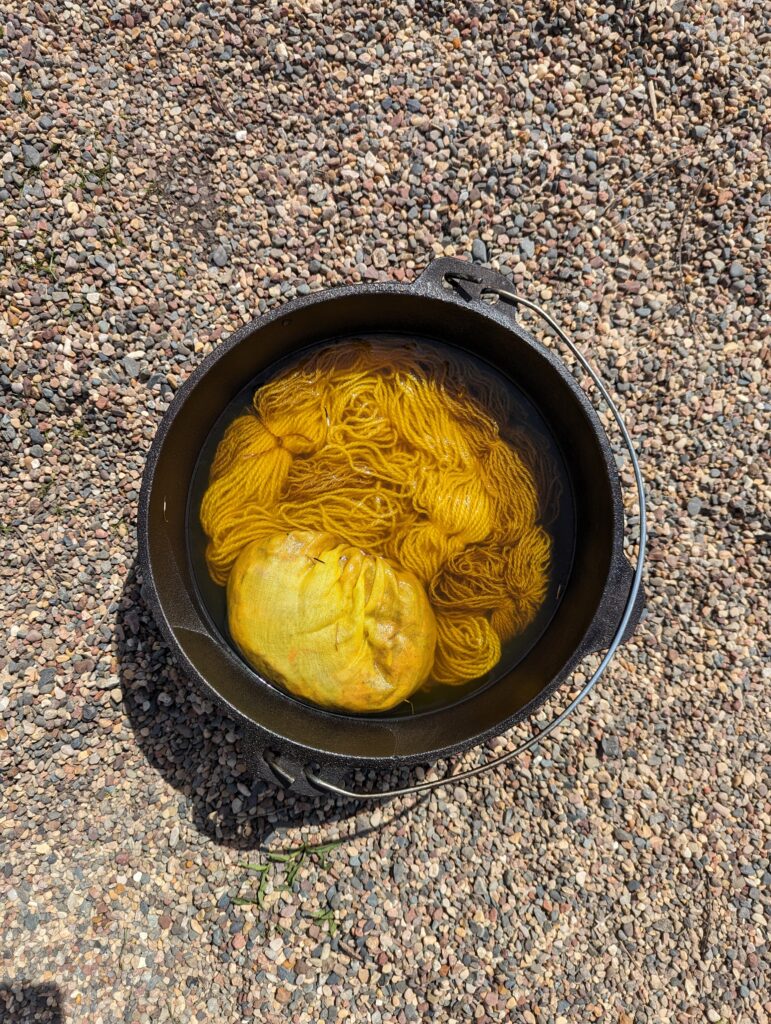This week we experimented with dying processes. My group, group A, dyed our wool using dried marigolds. Additionally, as a class we dyed wool using dried and processed natural indigo pigment. General data about the dyes and wool can be found below.
| Dye | Mordant | Dye Mass | Water Weight | Wool Mass | Thread Size | Water pH |
| Indigo | Alum | 20g | 5 gal | 100g (50g white, 50g grey) | ||
| Marigolds | Alum | 50g | 1 gal | 100 g (50g white, 50g grey) | 1.88mm | 7.2 |
Additionally, my group tracked the temperature of the water and dye throughout the dying process which took 1 hour and 10 minutes in total. The table below demonstrates the difficulty we had maintaining the ideal temperature of ~37.0 degrees Celsius. Nonetheless, we still were able to produce a deeply yellow thread.
| Time | 0:00 (dye bag added to water and removed from fire) | 10:00 (wool added to dye solution and placed back on fire) | 12:00 (removed from fire) | 17:45 (placed back on fire) | 20:00 (removed from fire) | 37:00 | 48:00 (placed back on fire) | 50:00 (removed from fire) | 1:10 (wool removed from dye solution) |
| Temp (C) | 34.9 | 24.6 | 44.7 | 31.5 | 49.4 | 44.0 | 28.0 | 51.5 | 33.3 |

We also collected data about how the weight of the raw dye ingredients of water and the dried marigolds changed in weight over the course of dyeing.
Water went from ~3.79kg → 2.07kg.
The dye bag went from 61g → 214g.


0 thoughts on “Group A Dyeing Data”